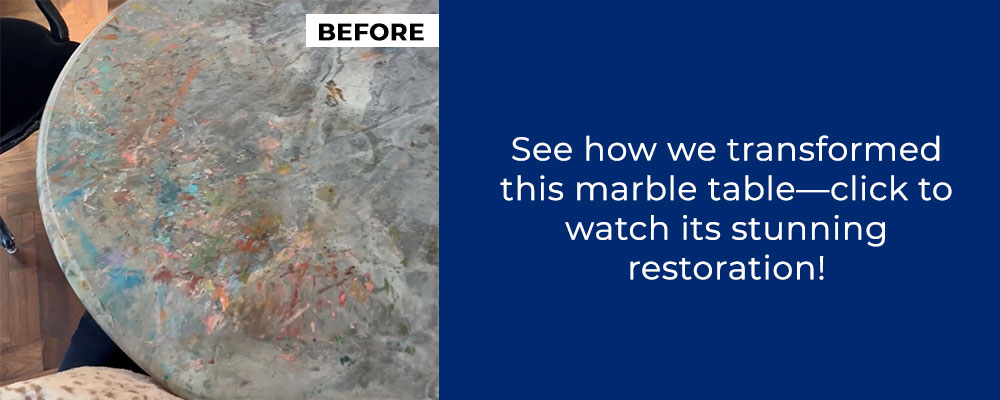Stone surface furniture—whether it's a marble-topped coffee table, a granite dining set, or a travertine sideboard—is timeless, durable, and often stunningly beautiful. But over time, even the strongest stone surfaces can chip, crack, stain, or dull with age and wear. Instead of replacing these treasured pieces, many homeowners are turning to restoration and repair as a practical, cost-effective solution. Whether it’s a beloved heirloom or an investment piece, giving stone furniture a second life can be a smart move.
Why Restore Instead of Replace?
1. Save Money
Stone furniture can be extremely expensive to replace. Natural stone materials like marble, onyx, and granite often come with a premium price tag—not to mention the custom work and craftsmanship involved. Restoring the surface is often a fraction of the cost of buying new. A professional repair job can bring the stone back to its original beauty for significantly less than a replacement would cost.
2. Preserve Sentimental Value
Some pieces can’t be replaced—like the travertine table your grandparents passed down or the custom marble countertop that’s been part of your family home for decades. Repairing chips, cracks, or stains allows you to preserve that history. Restoration can enhance not only the look but also the emotional value of a cherished item.
3. Eco-Friendly Option
Restoring stone surfaces helps reduce waste by keeping bulky furniture out of landfills. Choosing repair over replacement is a sustainable practice that supports the reuse of quality materials. Many stone types are meant to last generations—it makes sense to treat them as such.
Real Results: From Stained to Stunning
Our clients are painters — and this beautiful marble table was covered in paint stains, cup rings, and scratches. Years of use in a creative workspace had taken a toll on the surface. The once-luxurious marble was dulled by pigment buildup, etched by acidic liquids, and pitted from minor abrasions.
But with our professional restoration process, we brought it back to life! We used industry-grade stone-safe solvents to gently remove the paint without damaging the marble. After that, the surface was honed to smooth out scratches and etched spots, then polished to restore its natural luster. Finally, we sealed the stone to protect it from future staining.
The result? A vibrant, clean, like-new surface that retained all of its original character—with none of the wear and tear.
Common Stone Furniture Issues and How They’re Fixed
- Surface Scratches and Etching: Marble and limestone are particularly susceptible to etching from acidic substances (like lemon juice or wine). Professional polishing can remove surface damage and restore the shine.
- Chips and Cracks: Small chips and cracks in stone can be filled and color-matched with special epoxies or resins. When done correctly, the repair blends into the natural pattern of the stone, becoming virtually invisible.
- Stains and Discoloration: Porous stones like travertine and marble can absorb spills, leading to staining. Specialized poultices and cleaners can pull out many types of stains, while sealing the stone afterward helps prevent future damage.
- Dullness and Wear: Years of use can cause a once-polished stone surface to appear dull and lifeless. Honing and polishing bring back the original luster, and applying a high-quality sealer will protect the finish for years to come.
When to Call a Professional
While there are some DIY stone care products on the market, significant repairs should be handled by professionals—especially when dealing with vintage or high-value pieces. A skilled stone technician can assess the damage, select the right materials for the job, and ensure the repair is durable and well-blended. Learn more about professional stone restoration care.
Restoring Stone Is Restoring Value
Stone surface furniture is built to last—but life happens. Whether you’re dealing with a scratched coffee table or a cracked sideboard, restoring the surface helps you preserve both the financial and sentimental value of your piece. In many cases, the results are nothing short of transformative. Instead of sending that beloved table to the curb, consider giving it a second life—and saving money in the process.


